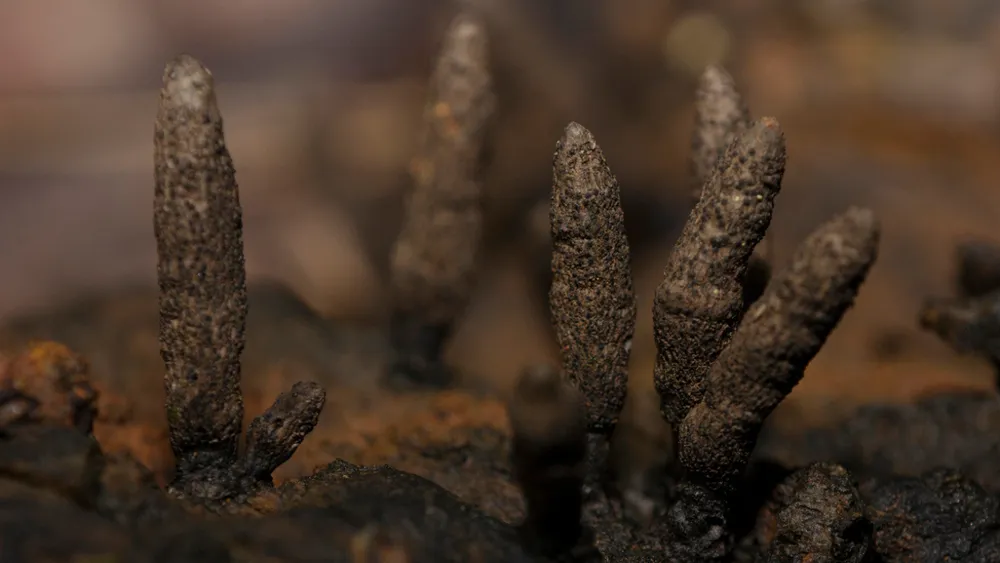

The 'dead man's fingers' (Xylaria polymorpha) are black, finger-like fungi that emerge from decaying wood in forests across the United States. These saprobic fungi play a vital role in decomposition, breaking down dead organic matter and recycling nutrients back into the soil. They can grow up to 10 cm tall and have a tough structure that allows them to survive for months or years, facilitating prolonged spore production. Found primarily at the base of dead trees, they are essential for maintaining the health of forest ecosystems.


The 'dead man's fingers' (Xylaria polymorpha) are black, finger-like fungi that emerge from decaying wood in forests across the United States. These saprobic fungi play a vital role in decomposition, breaking down dead organic matter and recycling nutrients back into the soil. They can grow up to 10 cm tall and have a tough structure that allows them to survive for months or years, facilitating prolonged spore production. Found primarily at the base of dead trees, they are essential for maintaining the health of forest ecosystems.
•They emerge from decaying wood in forests across the U.S.
•These fungi are crucial for breaking down dead organic matter.
•They can grow up to 10 cm tall and survive for months or years.
•Found at the base of dead trees, they recycle nutrients back into the soil.
•Essential for maintaining the health of forest ecosystems.
Need any assistance with your queries?
Our AI chatbot support is always available to provide answers to any questions but to begin with, here are some of our most asked questions
What are 'dead man's fingers'?
Where can 'dead man's fingers' be found?
Why are 'dead man's fingers' important?








